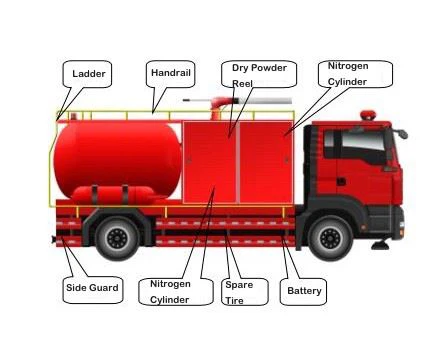Transforming Your ASL Yard: A Complete Guide

Introduction to ASL Yard
Creating an ASL yard, or an American Sign Language yard, involves more than just setting up a space for communication. It’s about cultivating an environment that embraces inclusivity and awareness of Deaf culture. Whether you are designing a yard for educational purposes, a community gathering, or personal use, this guide will provide you with a comprehensive understanding of how to establish an ASL yard that fosters interaction and understanding.
What is an ASL Yard?
An ASL yard is a designated outdoor space where individuals can practice and learn American Sign Language. This area aims to promote Deaf culture awareness and create a community hub for both hearing individuals and those who are Deaf or hard of hearing. In an ASL yard, various visual cues and interactive elements encourage learning and communication.
The Importance of an ASL Yard
Having an ASL yard is crucial for several reasons:
- Promotes Inclusivity: It fosters an environment where Deaf individuals feel accepted and valued.
- Encourages Learning: It offers a space for individuals to learn ASL interactively.
- Community Engagement: It brings together diverse individuals, fostering stronger community bonds.
Designing Your ASL Yard
When it comes to designing your ASL yard, there are several key factors to consider to ensure it is functional, educational, and welcoming.
Selecting the Right Location
Choosing the appropriate location is vital for your ASL yard. Here are some tips to help you find the perfect spot:
- Accessibility: Ensure the area is easily accessible for everyone.
- Visibility: Ideally, choose a location that is visible yet private enough for comfortable communication.
- Space: Make sure there is enough room for various activities and installations.
Essential Features of an ASL Yard
Incorporating specific features into your ASL yard can improve the quality of interaction and learning.
Visual Communication Boards
Install boards with visuals that represent common signs. These boards can be changed regularly to focus on new vocabulary.
Sign Language Pathways
Create pathways with embedded signs or illustrations that learners can follow. This idea will turn the yard into an interactive learning experience.
Seating Arrangements
Provide comfortable seating to encourage group discussions and meetings. Consider benches or picnic tables that allow for face-to-face interaction.
Reading Nooks
Include quiet areas with books on Deaf culture and ASL. Make sure they can be shaded or sheltered for outdoor reading comfort.
Interactive Activities for Your ASL Yard
To engage visitors, create opportunities for interactive activities within your ASL yard.

Workshops and Classes
Host regular workshops to teach ASL, covering basics to advanced signing skills. Encourage participants of all ages to join.
Community Events
Organize events, such as storytelling nights or sign language games, to bring the community together. This can enhance social bonding and learning.
Art Installations
Incorporate art installations that reflect Deaf culture. These can be sculptures, murals, or signs that initiate conversations about the Deaf experience.
Utilizing Technology in Your ASL Yard
Leveraging technology can enhance the learning experience in your ASL yard.

QR Codes for Learning
Use QR codes linked to videos demonstrating signs. Place them next to signs on visual boards for a mentored learning approach.

Virtual Interaction Opportunities
Integrate tablets or screens that showcase sign language videos, connect to online classes, or facilitate virtual conversations with Deaf individuals.
Practical Examples to Implement
Bringing concepts to life can inspire your ASL yard’s design and functionality.
Example: Sign Language Garden
Design a garden area with plants labeled with their signs. Each plant can include a picture of the plant alongside the sign to create a beautiful, educational display.
Example: Picnic Meetups
Organize monthly picnic meetups where visitors can practice signing while enjoying food and games. This informal setting often promotes more relaxed learning and interaction.
Example: Themed Sign Days
Host themed days where visitors can come dressed according to a theme and learn signs related to that theme—like animals, colors, or emotions.
Essential Tips for Managing Your ASL Yard
Managing your ASL yard effectively is crucial for its success and sustainability.
Feedback Mechanism
Develop a system for visitors to leave feedback about their experiences. Understanding their needs will help tailor the program more effectively.
Regular Maintenance
Ensure that the area is well-maintained to promote safety and aesthetics. Plan regular clean-ups and updates to displays.
Building Community Partnerships
Partner with local schools, Deaf organizations, or ASL instructors to host collaborative events and broaden your outreach.
FAQ Section
What is the primary goal of an ASL yard?
The primary goal of an ASL yard is to create an inclusive space where individuals can learn and practice American Sign Language while fostering a deeper understanding of Deaf culture.
Who can benefit from an ASL yard?
Everyone can benefit from an ASL yard—including hearing individuals, Deaf individuals, educators, and families looking to learn more about ASL and Deaf culture.
How often should events be held in the ASL yard?
It’s beneficial to host events at least monthly, but weekly gatherings can create a stronger community engagement and consistent practice opportunities.
Are there any costs associated with setting up an ASL yard?
Costs can vary depending on the features you wish to include. Simple setups with seating and signage can be affordable, while more elaborate designs may require additional funding.
How can I learn ASL to engage with others in the yard?
Consider taking courses at local community colleges, online classes, or engaging with local Deaf communities. Practice regularly to improve your signing skills.
What age range is suitable for an ASL yard?
An ASL yard is suitable for all ages. Activities can be designed to accommodate children, teens, adults, and seniors alike.
